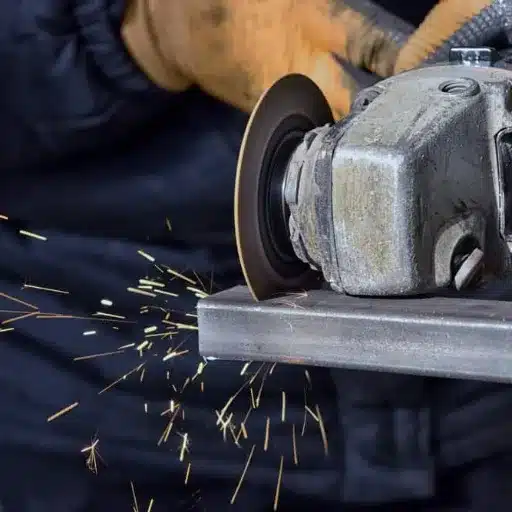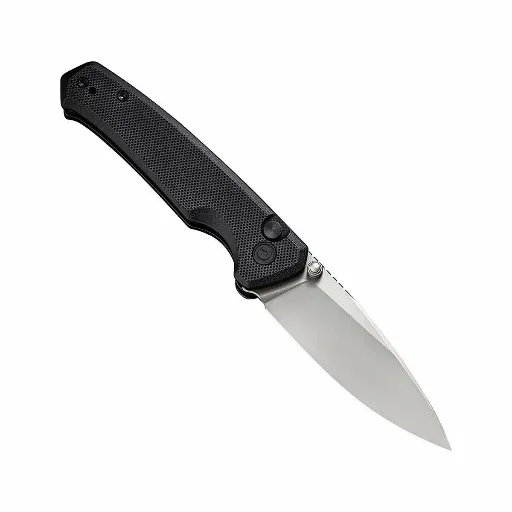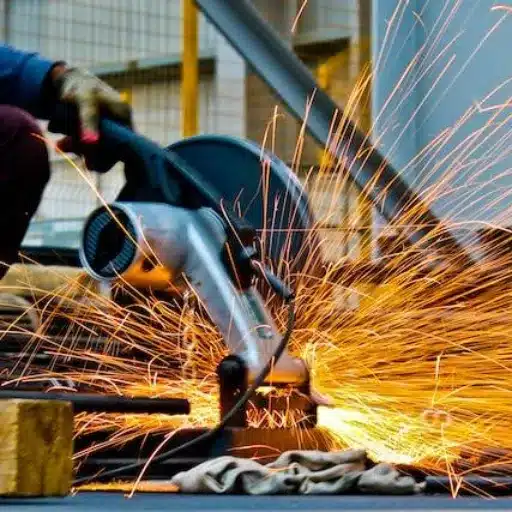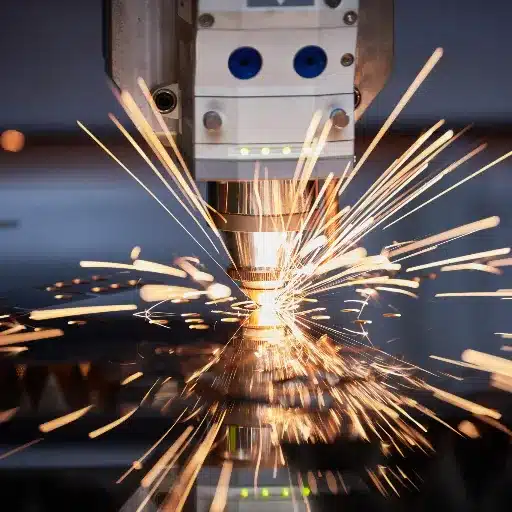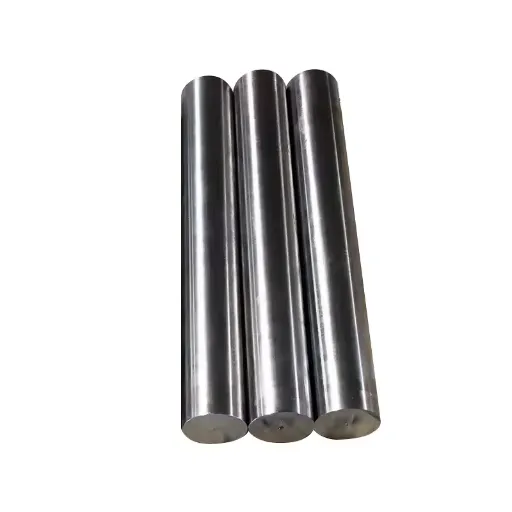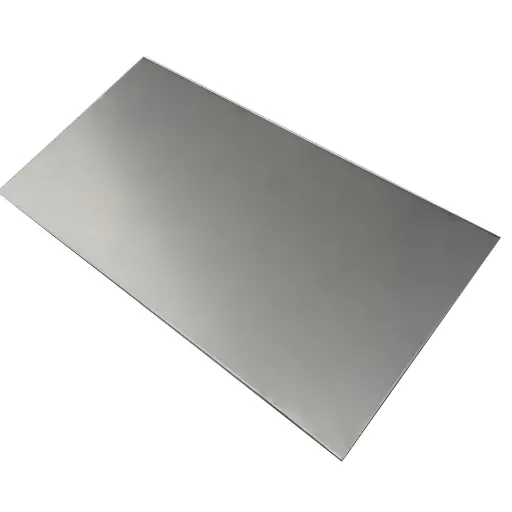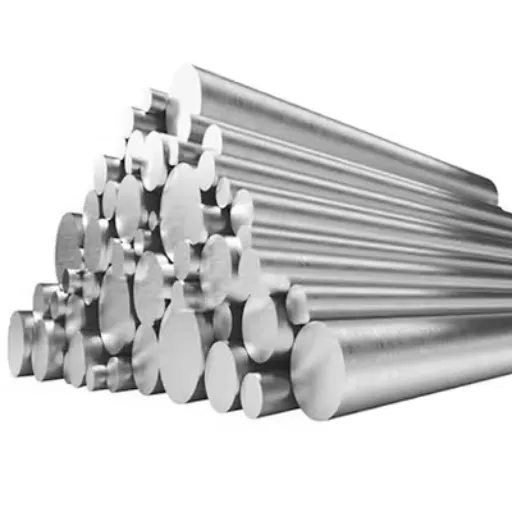The task of cutting stainless steel sheets can be quite difficult and at the same time, given the right conditions, highly accurate and fast. This is true whether you are a home-based DIY expert or a professional in the area of metal fabrication, the knowledge of good techniques for cutting stainless steel will definitely save you time, effort, and money. The present guide examines the available and most efficient techniques, tools, and considerations for cutting stainless steel sheets while, at the same time, guaranteeing clean and accurate results. We will guide you through the different options from the traditional tools to the advanced machinery depending on what your needs are. This article is rich in tips, tricks, and safety measures that will help you in smooth and non-fussy cutting processes.
Introduction to Cutting Stainless Steel
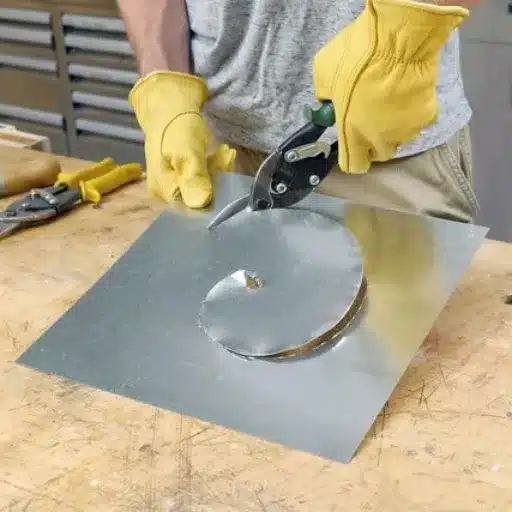
Importance of Choosing the Right Cutting Method
The choice of cutting method for stainless steel greatly influences the quality of the product, the preservation of the material and the effectiveness of the operation. Stainless steel is a material that possesses many qualities: it is a very strong, very durable, and very resistant to corrosion, besides, it is a very good-looking material. But, its properties also make it difficult to cut. To cut using an incorrect procedure can result in jagged edges, cutting wastes, or even tool damage.
In one study, first, it mentions that laser cutting has about an average tolerance accuracy of ±0.1 mm, making it perfect for intricate designs that require high precision. On the contrary, traditional techniques like saw cutting can produce much wider tolerances and suffer from overheated cutting which alters the material’s properties.
Applications of Cut Stainless Steel in Industries
Construction and Architecture
The construction industry makes prolific use of stainless steel sheets for the making of building facades, cladding, roofing, and interior design finishes. They provide remarkable strength, weather resistance, and an eye-catching look. The latest industry statistics show that the consumption of stainless steel in construction has been increasing at around 5% per year mainly due to its environmentally friendly and low-maintenance advantages.
Automotive Industry
The automotive industry makes extensive use of stainless steel for the production of exhaust systems, structural parts, and decorative trims. The excellent anti-corrosion property and the ability to survive there even at extremely high temperatures make it the most such a property. It has been reported that the use of steel in hybrids and electric vehicles is on the rise, as it is expected to enhance the overall performance and life span.
Food and Beverage Industry
Due to its hygienic properties, stainless steel is the first choice material for dairies, food processing plants, commercial kitchens, and breweries. It not only conforms to health and safety standards but also guarantees that the surfaces are easy to clean and resistant to staining. For example, grade 304 stainless steel is the most common alloy in this sector as its properties make it non-reactive.
Medical and Pharmaceutical Industry
Stainless steel sheets are their main material in hospitals for the production of surgical tools, medical devices, implants, and hospital equipment. The material’s chemical resistance and easy sterilization make it suitable for retaining the hygiene of the clinics. It has been reported that the annual growth rate of stainless steel for medical applications is over 7%, which is attributed to technological progress and increased healthcare infrastructure.
3 Ways to Cut Stainless Steel Sheet
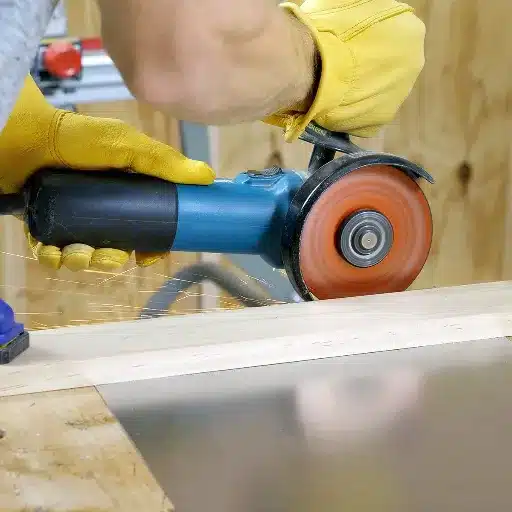
1. Using an Angle Grinder
An angle grinder is one of the best and most proficient tools for the cutting of stainless steel sheets. This lightweight power tool employs a revolving abrasive disc to, more or less, eat its way through a material. In order to utilize an angle grinder effectively, choosing the right disc such as a diamond or metal cut-off wheel that is specifically designed for cutting stainless steel is of utmost importance. Diamond cutting discs are the ones that, according to the reports, have gained the most popularity in the market owing to their long-lasting and high-quality operation characteristics, which, on average, give about 1000 cuts before the replacement depending on the thickness of the material, which is the thickest limit.
Safety during the operation of the angle grinder should be prioritized. Make sure to use personal protection equipment (PPE), which includes eye protection, gloves, and ear protection, to eliminate the likelihood of injuries. The cutting line on the stainless steel sheet can be marked with a permanent marker or masking tape for better precision. Moreover, it is very important to maintain the grinder at a constant angle of 15-20 degrees to the work surface for obtaining clean and accurate cuts. According to research, ¼-inch thick stainless steel sheets remain the most ideal for cutting with an angle grinder, thus making it a suitable solution for home DIY projects and light industrial uses.
2. Cutting with a Jigsaw
Cutting stainless steel sheets with a jigsaw is an additional method that works efficiently, especially if the task calls for intricate cuts or even curves. The jigsaw with the right blade, for instance, a bi-metal or carbide-grit blade, is just the right tool for this application. It is usually recommended to use blades that have high TPI (teeth per inch) count (which is normally from 21 to 24 TPI range) as such blades will give clean and precise cuts through the stainless steel thereby making the jigsaw one of the most preferred options.
When cutting with a jigsaw, it is necessary to clamp the stainless steel sheet tightly to avoid vibrations and shifting of the material during the cut. Also, to make the heat less, a cutting lubricant would be a practical implement. Jigsaws, when compared to angle grinders, do offer more control over the cutting path, therefore, they are most suitable for cutting out complicated patterns or non-linear cuts.
3. Employing a Circular Saw
Circular saws can be the most dependable and effective instruments to cut stainless steel, particularly if they are with the right blade. Circular saws with diamond blades or carbide-tipped blades are the best in making precision and durability. When it comes to the thickness of stainless steel sheets, the recent report cites that a circular saw can cut up to ¼-inch (6.35 mm) thickness, however, the operators have to be extra careful at the thicker end because of the possible strain on the equipment and shorter blade life.
Experts recommend that the material be held tight and cutting should be done at slow speeds so that heat is minimized and warping is avoided. To further increase the efficiency, cutting oil is also a suggestion to avoid friction and thus prolong the life of the blade. For instance, studies have shown that the application of lubrication can prolong a blade’s effectiveness as much as 30% in stainless steel applications. For professional dealing with greater projects, a circular saw with variable speed settings will provide them with the needed control and adaptability for different material thicknesses as well.
Comparing Tools for Cutting Stainless Steel
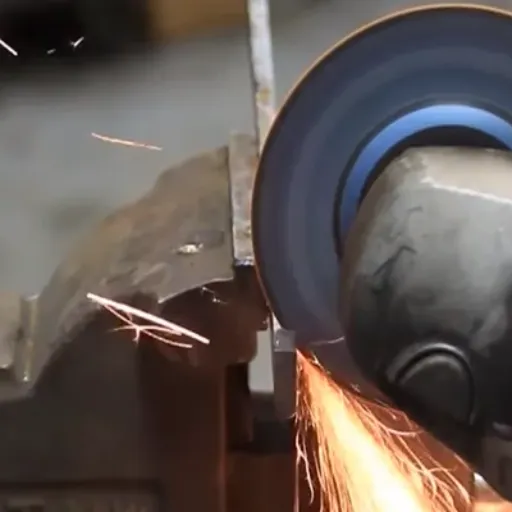
| Tool Comparison | Features | Best Use Cases |
|---|---|---|
| Angle Grinder vs. Jigsaw | Speed and efficiency comparison | Different cutting requirements |
| Band Saw vs. Circular Saw | Precision and portability | Project scale and complexity |
Angle Grinder vs. Jigsaw
Angle Grinder
An angle grinder is a very multifunctional and tough instrument that has gained acceptance among professionals as well as the amateurs’ market of DIY. When fitted with a cutting metal disc, this instrument can perform so easily and neatly and almost instantaneously piercing stainless steel sheets, pipes as well as bars. An angle grinder can rotate that fast, 10000 RPM, which means snatching the material away at a very rapid and efficient pace especially in the case of largescale projects. Nonetheless, it generates heat and sparks which could be dangerous, thus, users must observe safety regulations by wearing safety goggles and gloves at all times. The use of abrasive discs of very good quality or diamond blades is highly advised in order to get very precise cutting, as well as minimize burrs on the edges.
Jigsaw
Conversely, the jigsaw is a more accurate instrument when it comes to cutting stainless steel in complex shapes or intricate designs. If a bi-metal blade or carbide-tipped blade are used, the machine can easily penetrate the scale of stainless steel thicknesses up to 10-16 gauge. The jigsaw is operating at a slower cutting speed, which is about 500 to 3,000 cuts (strokes) per minute, thus the sparks and heat produced are very little, hence it is safe for use on jobs that require more attention.
Band Saw vs. Circular Saw
Band Saw: The band saw is the machine of choice when it comes to cutting curves, irregular shapes, or resawing thick materials. It has a moving continuous blade that operates up and down vertically creating very accurate cuts, especially in furniture making and other similar woodworking projects. Although band saws can work on metals and thicker materials, they weigh more and are less portable than circular saws. Nevertheless, modern saws come with adjustable speeds which add to their versatility.
Circular Saw: The circular saw, on the other hand, is large but still portable and very efficient, capable of making direct cuts in the most common types of wood, plastic, and metal. The to-and-fro motion of its blade at 6000 RPM means that the cutting task gets done really fast and the tool will be great for large sheets or framing work. The circular saw can, however, be a bit tricky when it comes to making curved or intricate cuts, hence it is often equipped with guides or tracks for straight cuts that require precision.
Safety Precautions When Cutting Stainless Steel
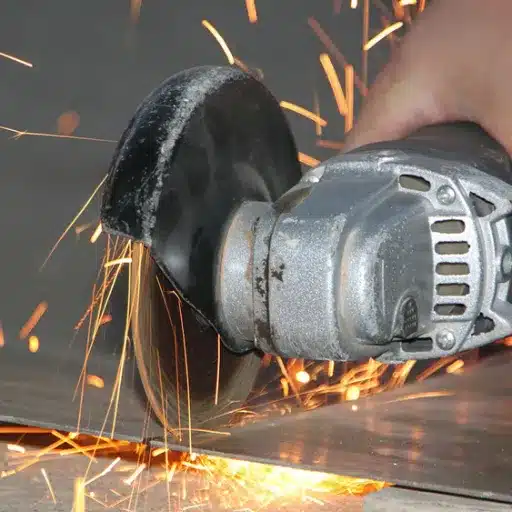
Personal Protective Equipment (PPE)
- Safety Glasses or Goggles: These are important to protect the eyes from flying metal pieces and sparks, which are typical in metal cutting. The safest option is ANSI Z87.1-approved eyewear for impact resistance.
- Gloves: The use of cut-resistant gloves not only protects hands from injuries due to sharp stainless steel edges but also gives a strong grip during the handling process.
- Respirators: When cutting stainless steel, fine dust particles may be released, including those of chromium and nickel that can be harmful to the respiratory system. Use an N95 or a higher-rated respirator always to ensure that you are effectively protected from the inhalation of the harmful fumes.
- Hearing Protection: The noise produced by circular saws and other cutting tools is usually above the safe limit of 85 dB. Therefore, using earplugs or earmuffs that are suitable will help to prevent the occurrence of hearing loss due to long-term exposure to noise.
- Flame-Resistant Clothing: Since sparks can set clothing made of flammable materials on fire, it is highly recommended to wear flame-retardant apparel that is made of treated cotton or other similar materials.
- Steel-Toe Boots: They are for the protection of the feet against dropping objects or heavy materials during the handling process of stainless steel.
Work Area Safety Tips
Keep the Work Area Clean and Orderly
A clean and organized work area is a big factor in minimizing slips, trips, and falls, which account for nearly 27% of work injuries, as per the National Safety Council (NSC). Be sure to wipe off spills immediately, store tools and materials correctly, and do not block paths with equipment or other things.
Arrange Regular Safety Training
Teaching workers about possible dangers and the right practices is necessary. Studies reveal that companies with regular safety training programs experience a decline of up to 64% in workplace injuries. Make it a point that everybody in the company knows the emergency plans and how to use the equipment properly.
Take Inspections as a Tool for Discovering Hazards
Safety inspections conducted at regular intervals are important as they assist in identifying risks and also in taking necessary actions before such risks develop into major ones. For example, the unrepaired faulty equipment or the unnoticed structural issue may cause severe accidents. The Occupational Safety and Health Administration (OSHA) strongly advocates routine compliance checks.
Make Sure the Area is Well-Lit
Good lighting is a factor that is often ignored but is a must-have for accident-free workplaces, especially in areas of high risk. Lack of light can increase the probability of making mistakes or having accidents by 30% in tasks that involve manual or intricate work.
Reference Sources
-
Industrial Metal Service
Article: Precision in Action: How to Cut Stainless Steel the Right Way
This source discusses various tools and techniques, such as using a circular saw with metal cutting blades, for achieving precision in cutting stainless steel sheets. -
HN Deco Metal
Article: Stainless Steel Sheets Cutting: 7 Best Methods to Apply
This blog outlines seven effective methods for cutting stainless steel sheets, including tools like tin snips, angle grinders, and plasma cutters. -
Benchmark Abrasives
Article: 11 Effective Ways To Cut Sheet Metal With Power Tools
This source provides a comprehensive guide on using various power tools, such as angle grinders and circular saws, for cutting sheet metal, including stainless steel.
Frequently Asked Questions (FAQs)
What is the best way to cut stainless steel sheet?
The method for cutting stainless steel sheet best varies according to the thickness and cutting type needed. A jigsaw with a metal cutting blade or a rotary tool can work well for thinner sheets. Circular saw with a steel cutting blade or an angle grinder with a cut-off wheel may be necessary for thicker sheets. Having the right tool for your particular project will help to produce a clean cut.
How can I cut stainless steel without damaging it?
To cut stainless steel without causing any damage you are to use metal cutting blades of the highest quality and make sure the material is held tightly in a clamp. The proper saw blade combination minimizes heat buildup that could have an effect on the quality of the cut. In addition, slow and steady cutting along with a deburring tool can be employed to help keep the stainless steel intact.
What are the different ways to cut stainless steel?
Cutting stainless steel can be achieved in various ways: by means of a jigsaw, a circular saw, an angle grinder, or a laser cutter. Each method has its pros and cons; for example, a laser cutter is very precise for detailed works, while the circular saw is most suitable for straight cuts on thick sheets. The choice of the best technique rests on the particular needs of your project.
Can I use a jigsaw to cut stainless steel?
Definitely; if you are dealing with thinner sheets, then jigsaw can be your cutting tool for stainless steel. A metal jigsaw blade must be used to ensure the cut is clean and accurate. Besides, the sheet must be clamped well and cuts need to be made steadily to prevent the material from ruining.

